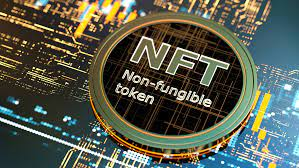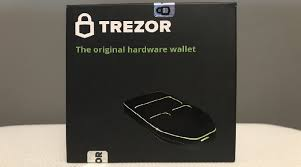Imagine buying an NFT, sometimes for the same amount of money you would pay for a house or a brand new car. To your shock, a week later you open your digital wallet and surprise…it’s gone.
Your first questions would probably be along the lines of What the hell? How is this even possible? Aren’t NFT’s supposed to be a safe thing? In fact, aren’t experts advising artists to turn their work into NFTs specifically to protect them from being digitally stolen?

Well, in short, the whole NFT system is a lot more delicate than it seems. Basically, an NFT isn’t the actual piece of artwork itself, rather, it stores information on where you can find the artwork and what the artwork is, as it is a link that directs you somewhere else, where the digital art is actually stored.
Ensuring the adequate maintenance of an NFT, just like someone would with regular artwork is still a must. There are various ways to store NFTs nowadays, but which wallet or method is the most secure and efficient?
Where are NFTs typically stored?
In the simplest terms possible, an NFT is a record (a document with a hash) stored on Ethereum (usually) that points to where its associated content (the image) lives somewhere else on the internet, as it is very expensive to store images on Ethereum. The developers behind the ERC-721 standard explicitly decided not to weigh in on where a creator puts the data and how reliable that storage site is, leaving that tidbit up to others to determine.
NFTs are stored on a digital ledger, known as a blockchain, which certifies a digital asset to be unique and therefore not interchangeable. On the web, addresses point to locations. There’s a specific website and a specific file on that website where some data sits. For example, there might be millions of copies of Nyan Cat across the internet, but a traditional HTTPS address (like the one at the top of your browser right now) will only point to one file online. This is used to identify the authenticity of NFTs, one of the reasons behind their high value sometimes, as it can be a rare and sought after collector’s item.

However, most NFTs do not permanently live on a blockchain, meaning that it is up to the NFT buyer to take the necessary steps to store and protect the NFT. This can be done in a variety of ways, such as through metamask. Most NFT marketplaces interact seamlessly with Metamask, a browser-based wallet, giving the user easy access to their NFTs. The wallet will interact with the blockchain in order to sign the transaction, and the private/public key in your wallet will be associated and directly linked with the ownership of your NFT. Due to this, it is extremely important to keep private keys secure.
Another alternative is through reputable hardware wallets like Ledger or Trezor. Both are compatible with the most common NFT token standards, including the ERC-721 token standard. When using these wallets, it is also important to back them up and keep the seed phrases in a secure location.
Finally, another common alternative is storing NFTs on third party websites such as IPFS. IPFS (InterPlanetary File System) is a protocol and peer-to-peer network for storing and sharing data in a distributed file system. Additionally, IPFS uses content-addressing to uniquely identify each file in a global namespace connecting all computing devices. IPFS is a well known, secure option, but can be complicated to use for the new and lesser experienced NFT connoisseur.
How can an NFT disappear?
Unlike purchasing a painting or an antique car, when someone buys an NFT, in most cases an artwork or even an image file isn’t actually purchased. Instead, a little bit of code that references a piece of media located somewhere else on the internet is bought. This is where problems arise, as digital artworks themselves are not immutably registered on the blockchain when a purchase is made.
When an artwork is bought, it mints a new cryptographic signature that, when decoded, points to an image hosted elsewhere. This could be a regular website, or it might be on a large peer-to-peer file storage system (such as IPFS).
As a result of this, NFTs can go missing in a variety of ways, as the token with the smart contract might not link directly to the asset. Another way is that the asset could be on a centralized provider such as Cloudinary, that could eventually shut down, leading to lost NFTs. Furthermore, an NFT could merely link to a URL, meaning that whatever is stored from that URL can be changed. Just like when purchasing a painting or an antique car, an NFT needs to be taken care of, and stored properly to ensure it is not lost. If not taken care of properly, it is the same as having the money paid for the NFT disappear.

So what is the best way to store a NFT?
Since an NFT can’t be easily changed after it’s been created, it’s a good idea to think about how the data for your NFTs is stored, addressed, and made persistent over time. One of the best options right now is to use Metamask. Metamask is an extremely user-friendly option, and has many other features such as the ability to create a wallet for Ether and ERC20 tokens, along with running Ethereum dApps (decentralized apps) directly in the browser without having to download and synchronize the complete Ethereum blockchain on the device, making it an extremely popular choice among the newer generation of people to NFTs.

However, if storing more than 500$ worth of NFTs or crypto, it is recommended to use a hardware wallet, such as Ledger or Trezor. Although a bit more complicated than Metamask, these hardware wallets provide the most security to a user, and become easier to use and understand with time. When using these hardware wallets, it is important to backup the wallet and to secure the seed phrase in a safe location, never to be seen by anyone other than you.








